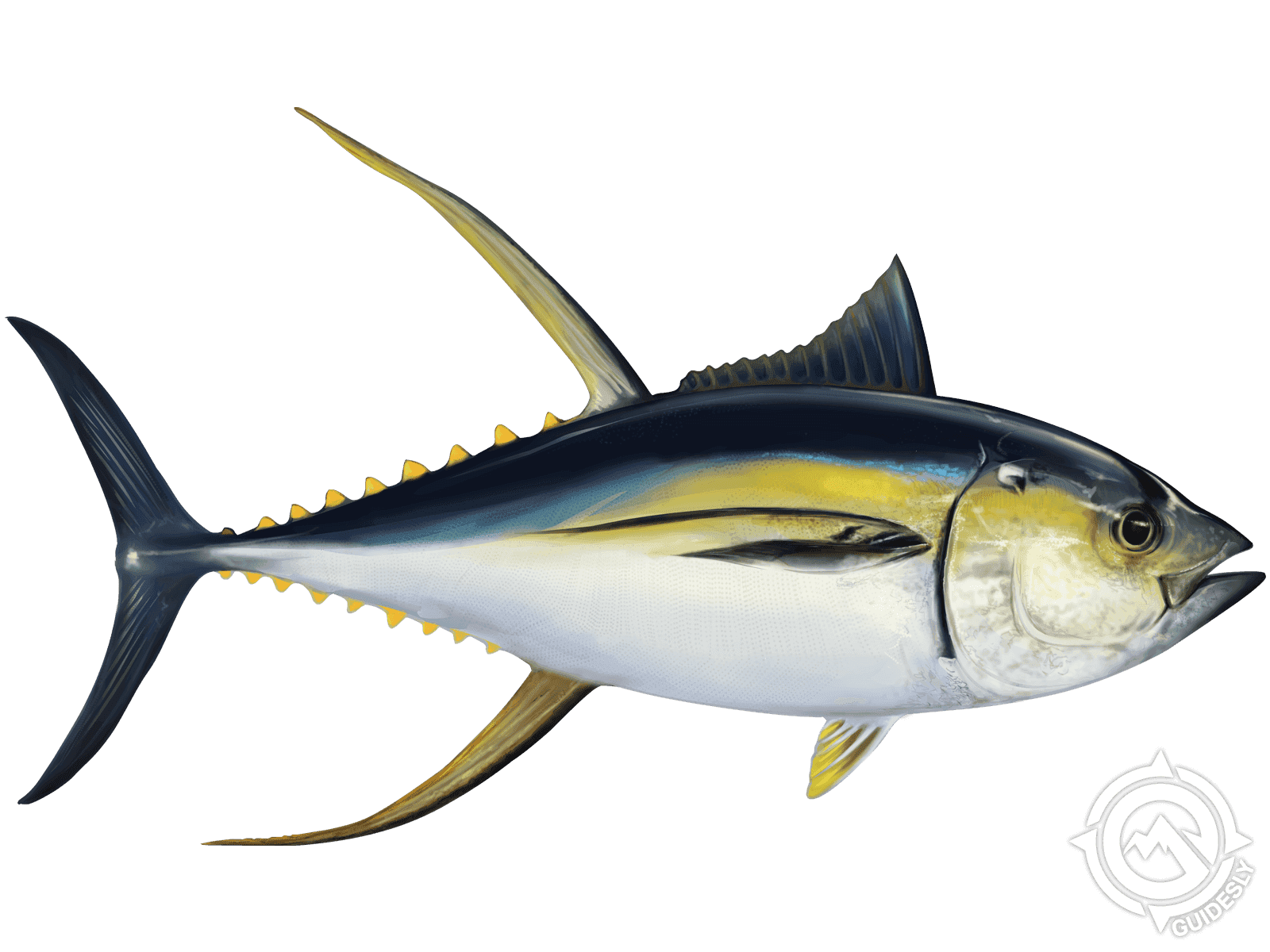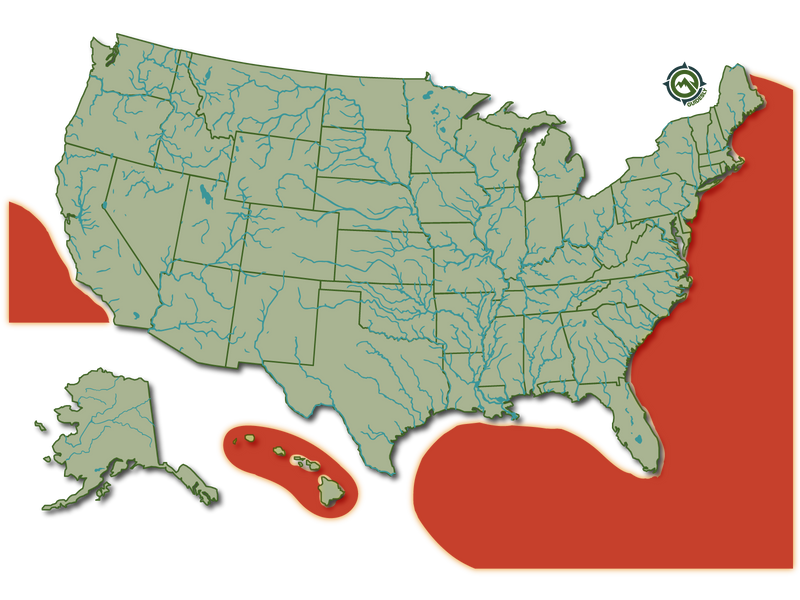Yellowfin Tuna

Species Details
Thunnus Albacares
Scombridae
Perciformes
Offshore
40 - 150 lbs.
27" - 94"
Yellowfin Tuna (Thunnus Albacares) Description
The Yellowfin Tuna is a larger fish in the tuna species. It has a streamlined and torpedo-shaped body with bright yellow coloring on its tail, dorsal fin, and anal fin thus giving it its name. Along with the yellow color on their sides, they have dark metallic blue color on their backs and silver on their belly region. In an adult Yellowfin, the second dorsal and anal fins are large, extending back to the tail, and appear as crescents. It is a warm-blooded fish.
Size and Speed:
Yellowfin can be found weighing up to 440 pounds, but an angler is more likely to catch a 60-pounder. The body ranges from 2 to 7 feet. Due to their streamlined body, yellowfin tuna can move at an astonishing speed of 50 miles per hour.
Fun Facts
- The Yellowfin Tuna, or known by their other name, Ahi, is a prized fish in the Japanese fresh fish cuisine of sushi or sashimi. It also makes a great grilling steak.
- Although the Bluefin Tuna is considered the holy grail of fresh tuna because of its delicious fatty meat, the Yellowfin comes in at a close second in taste and is much cheaper and easier to find at the grocery or fish store.
- Bluefin is quickly picked up by high-end restaurants making Yellowfin more readily available at the fish market.
- Yellowfin Tuna are known as spawning and eating machines. They have a featured meshwork of tiny blood vessels around their muscles, making them warm-blooded.
Habitat:
Yellowfin tuna are commonly found in tropical and sub-tropical regions worldwide. They are most often found in the upper hundred meters of the water column. Yellowfin tuna are highly migratory; they travel large distances and even entire oceans.

Fishing Techniques - How to Catch Yellowfin Tuna
Yellowfin Tuna are abundantly caught as offshore gamefish throughout the year. Different methods include trolling, casting, jigging, or drifting. Setting up a trolling spread can be a complicated business, but rigged ballyhoo, skirted trolling lures, cedar plugs, and spreader bars are a good place to start. When you’re marking fish down deep but nothing’s biting, sometimes it’s smart to bring in the spread and start jigging.
While trolling and jigging can be effective, nothing matches the excitement of a Yellowfin coming out of nowhere to annihilate a surface plug.
Fly fishing is not easy for yellowfin tuna. Popper and Tandem tube fly are best, but it can be hard to get a yellowfin tuna to commit to taking your fly.
Chunking is a technique that’s often used to draw the attention of a finicky tuna. It’s pretty straightforward, essentially cutting up dead bait and tossing it overboard to draw hungry tuna up from the depths. You’ll have the most success using whatever it is that the tuna are feeding on at that time of year in your location. Herring, menhaden, blue runners, and anchovies are all viable options.
Spawning:
This tuna spawns from May to August in the Gulf of Mexico and from July to November in the southeastern Caribbean.
Distribution and Habitat
Yellowfin tuna are native to the Pacific Ocean, Indian Ocean, and Atlantic ocean. They can be found as far north as Massachusetts in the summer.
They are found in the top 330 feet or pelagic zone of the water.
US Regulations
US Regulations Season - always open
Size limit - The Carolinas, Alabama, Louisiana, Mississippi - 27'' curved, FL minimum; other states have no size regulations.
Bag limit (per angler per day) - The Carolinas, Mississippi - 3; California has a 20 finfish bag limit, with no more than 10 fish of a single species allowed, other states have no relevant bag regulations;






